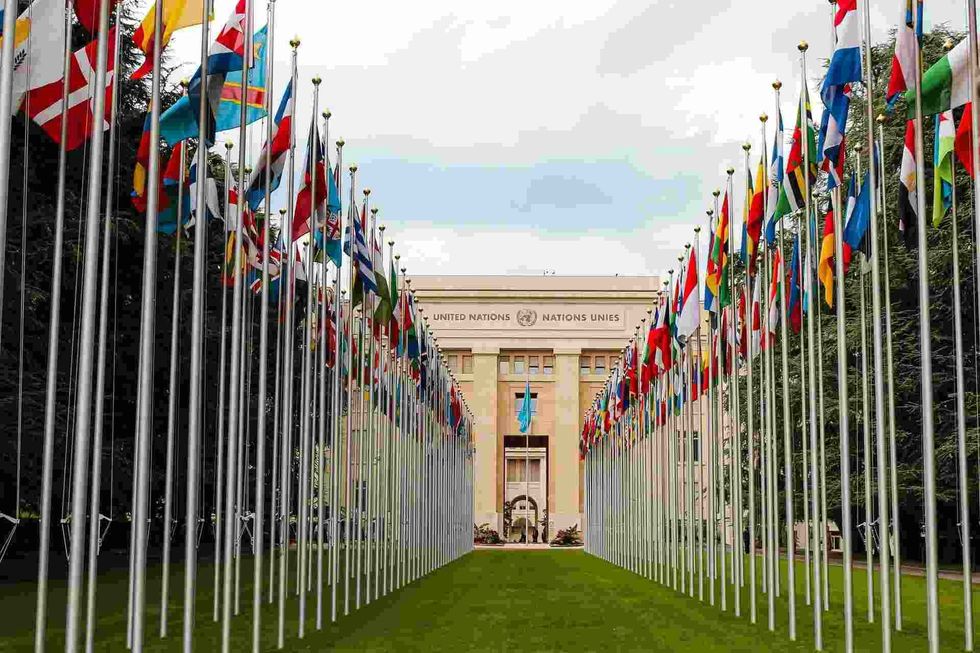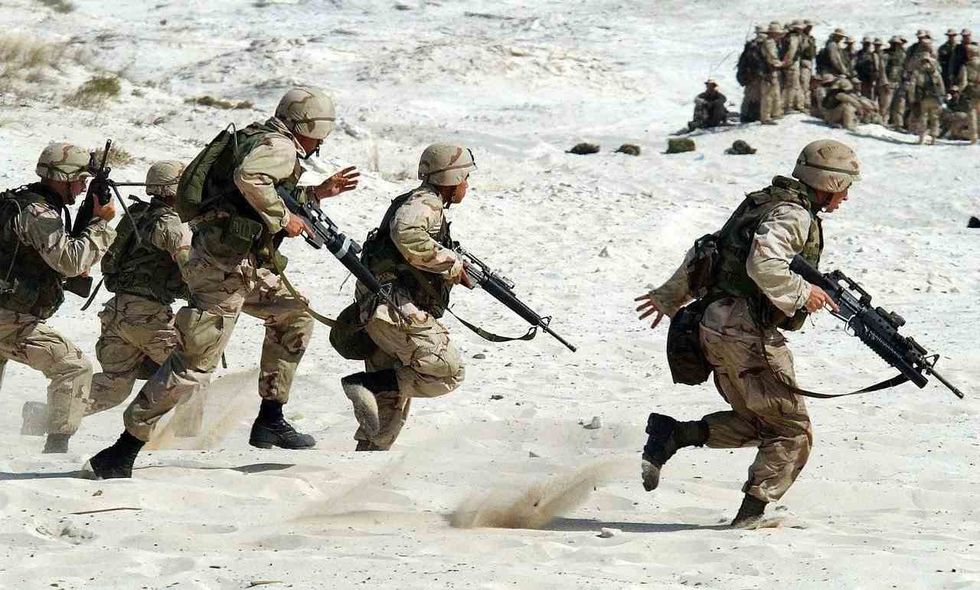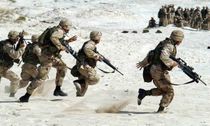27 Desert Storm Facts And Causes You Should Know About
In 1991, on January 16, President George Bush declared the commencement of Operation Desert Storm.
Desert Storm is also known by other names such as the Persian Gulf War, the First Gulf War, or even Desert Shield. All these names are point towards the same war.
This war declared against Iraq by the United States and its allies had several names, like the First Gulf War, Kuwait War, Iraq War, Persian Gulf War, or the First Iraq War before the term Iraq War was used. The US called this Operation Iraqi Freedom.
The Iraqis to this day claim this war to be the mother of all battles. It was also said that this war was one of the most successful ventures under President George Bush's administration.
But why was it so successful and, perhaps more importantly, what was the main cause behind this war? Was it some personal vengeance or some historical enmity?
Who were the stakeholders and what was the outcome? Who ultimately won the war?
Lots will unfold about one of modern history's significant wars as we answer all these questions racing in your mind! We are sure you wouldn't want to miss out on this information on recent history that involved the United States of America and the Middle East.
If you are a history buff or even if you are not, we guarantee you, this article will inspire your curiosity!
So what are you waiting for? Keep reading to learn some exciting Desert Storm facts, about the war also known as the Iraq War.
If you are into history and wars, then you should definitely check out our other similar articles, like Cold War facts and Vietnam War facts. These articles will surely interest you as much as this Desert Storm article does!
What happened in Desert Storm?
Operation Desert Storm is another name, or rather a codename, for the Gulf War, which like its name, was a pretty unique war. The war was sort of an operation of defense of mainly Saudi Arabia and was waged by a 35-nations coalition force!
The war had two sides, primarily the United States and Iraq, and was fought in response to Iraq's invasion of Kuwait. Did you know that this war was one of the shortest recorded wars in history, with a duration of only 43 days!
The war began on January 17 and ended on February 28, 1991, and not only was the war short-lived but also very cheap as well. Another fact about the war is that Iraqi combat engineers had filled oil into trenches they created in the Persian Gulf to prevent the US marines from landing.
Interesting right? Keep reading for more such facts.
What happened during this war was quite interesting. In 1991, on January 16, President George Bush declared the commencement of Operation Desert Storm, which was to be military operations held to force the Iraqi army out of Kuwait. This Iraqi invasion was stationed near the Saudi-Iraqi border and involved about 900,000 troops from the US and its allied forces.
Saudi Arabia and the US decided to deploy US forces to Saudi Arabia for the protection of the Peninsula. Simultaneously, the United States of America and the other coalition forces insisted on Iraq's withdrawal from Kuwait. Iraq was stubborn and instead began destroying Kuwait's infrastructure and looting it!
The Bush Administration made a decision on October 30 to drive Iraq's forces out of Kuwait by force. President George Bush ordered an increase of US troops and petitioned that the United Nations call for authorization to use force as means to achieve the target.
The result came as United Nations Resolution 678 that authorized the use of force if necessary to compel Iraq out of Kuwait. The United Nations Resolution 678 even provided Iraq with a 45-day grace period to withdraw all of its forces from Kuwait.
All of the forces present on the ground then started the process of liberating Kuwait, as led and supervised by the United Nations.
As the UN had given January 15 to be the deadline of withdrawal, coalition forces from the US began attacking targets on Saudi Arabia through sea and air, despite knowing that the use of chemical weapons by the Arab nations was a possible threat.
All the coalition forces advanced from Kuwait City to Iraq but reached a ceasefire in about 100 hours, leaving Saddam Hussein in power.
Desert Storm was also the first Gulf War where the Patriot missile systems were used to defeat and fight the Scud missiles. The countries' air force also relied on various space systems and stealth to give them adequate technological backup.
Did you know this war had live news broadcast from the very front lines! CNN, the popular US network handled this task.
Many people then eventually started calling Operation Desert Storm a video game war due to its daily broadcasting of US bombers. Due to this, this Gulf War has inspired several video games such as Gulf War: Conflict: Desert Storm, Operation Desert Hammer and Conflict: Desert Storm II.
Numerous films such as 'Jarhead' in 2005 incorporated this war in their scripts. That film was based on the memoir of US Marine official Anthony Swofford.
In fact, this war has gained notoriety for having included three very large tanks to be put on the front, the largest in American war history.
How long did Desert Storm last?
February 28, 2021, marked 30 years of the Gulf War, Operation Desert Storm. This Iran- Iraq war was the first major armed conflict between the US and the Arab nations. Let's dig deep into the war and how long it lasted.
On 1990, August 2, the Iraqi forces invaded Kuwait city and refused to leave, and so former US President George Bush declared this Iraqi invasion to be wrong and invalid.
This led to the launch of Operation Desert Shield, and five and half months into the operation, the United Nations intervened to authorize the use of all necessary alternatives to remove the Iraqi forces.
However, the combat phase of the Kuwait war began on January 17, 1991.
The Marine Corps was an essential part of the war as over 45,000 Marines were deployed on the Persian Gulf during Operation Desert Storm. The reason being these corps could commit several soldiers on a priority basis.
On January 29, 1991, there was heavy ground firing, producing several casualties from both sides of the war.
On February 24, the Marine forces kicked off the final phase of the operation by positioning themselves in the Gulf to illustrate an amphibious raid.
This illusion gave time for the other forces to attack the Iraqi troops from behind, and post 100 hours; the assault came to an end. On February 28, 1991, President George Bush declared a ceasefire, and thus the war lasted for 43 days.
Soldiers Who Served In Desert Storm
Operation Desert Storm was the Persian Gulf War, the first Iran-Iraq war with the United States. Although it was a short-lived war, the casualties and the number of soldiers who fought in the war were considerable. Let's get a glimpse of how many soldiers served in this war.
To take a count, more than 650,000 service members served in the Desert Storm war from August 2, 1990, to July 31, 1991. The US veterans of the war who served during this period are given a number of health, pension, and other monetary benefits.
From the United States alone, approximately 900,000 US troops participated. Although the exact names of the soldiers are unavailable, we can be sure of the significant role all these soldiers played in the war. These troops fought on the ground for six months to drive the Iraqi troops out from Kuwait City that they had invaded many months earlier.
Both men and women took part in this war, and some of them are even serving their country to this day.
The losses on both sides were significant, totaling up to around 250 army personnel, most being from the United States. From the British forces, around 47 had died, but from the Iraqi and Iranian side, 25,000-35,000 soldiers died.
The different battalions that took part in the war from the United States are as follows: Soldiers from 1st Cavalry, 2nd Brigade, 1st Batallion, 8th Cavalry, 5th Cavalry, 32nd Armor, 8th Engineer, 3rd Batallion, and 82nd Field Artillery. All these groups showed extraordinary heroism in the battle.

The Cause Of Desert Storm
The seeds of Operation Desert Storm were sown decades before the war even began. Iraq had always been a country in the Middle East that was volatile and caused trouble to its neighbors.
The Ba'athist political party formed the Iraqi government in the 1960s to seize power. The leading Ba'athist politician, General Saddam Hussein became Iraq's official president in the late 1970s and took Iraq to its fateful destiny, leading the country into war with the western powers.
Saddam Hussein assisted the build-up of Iraq's military to wage war on Iran in 1980. This war against Iran lasted for about eight years!
You can only imagine the grave losses on each side; hundreds of thousands of lives on each side were lost, including civilians. Once the war concluded, Saddam Hussein started searching for other places for territorial gain.
After a long and severe eight-year war with Iran, Iraq was in debt to the United Arab Emirates and Kuwait, who had helped finance the war for them. But in return, Hussein claimed that Iraq did not owe both the countries any debt as Iraq had successfully protected them against Iran.
Still, both Kuwait and the United Arab Emirates refused to agree.
In fact, to top it all off, in July 1990, Saddam Husein even claimed that the United Arab Emirates and Kuwait were over-producing crude oil, indirectly depleting Iraq's oil reserves and revenues.
Hussein made an allegation of theft from an Iraq-Kuwait border oil field, reigniting a decades-old border dispute. The Iraq president even accused Israel and the US of encouraging Kuwait to lower its prices for oil.
Relations between different parties deteriorated, which provoked Saddam Hussein to settle and invade Kuwait, a rather small country along the Persian Gulf to Iraq's southeast, with plenty of oil reserves. On 2nd August 1990, Iraq invaded Kuwait by bombing the city and sending Iraqi troops into the country.
The Iraqi forces back then constituted the fourth largest army in the world and had about one and a half million men!
In comparison to that, Kuwait had a mere 16,000 men in their army. Thus you can gather that Kuwait was unable to stop Iraq's onslaught into its country.
The United Nations Security Council did approve sanctions and placed an embargo on Iraq. Still, after a few months when Saddam Hussein refused to cooperate with them and comply with their terms to withdraw, Operation Desert Storm, led by the USA, began.
The Duration Of Desert Storm
Operation Desert Storm was the Gulf War that was fought between mainly the United States and Iraq. It was a short war that lasted for merely 43 days.
Despite this short duration, a lot of important events happened during the period. Let's know about some important Desert Storm dates, too, to understand more about the duration and period of Operation Desert Storm.
A coalition of about 35 nations came together. The war comprised two phases: Operation Desert Shield (August 2, 1990–January 17, 1991) and operations to lead the defense and buildup of troops to be sent to Saudi Arabia. The second phase was what we know, Operation Desert Storm (January 17, 1991 - February 28, 1991), the actual combat phase.
A series of naval and aerial bombardments took place on January 17, 1991, as the initial steps aimed at expelling the Iraqi troops from Kuwait. Ground assault on February 25 followed soon after, which resulted in a sure victory for the United States of America and other coalition forces.
This resulted in Kuwait's liberation and the forces even advanced into the Iraqi region.
But later, as the coalition forces advanced, a ceasefire was immediately declared, 100 hours post the commencement of the ground campaign. Thus, the ground and aerial combat were limited to Kuwait, Iraq, and other places around Saudi Arabia's border.
Here at Kidadl, we have carefully created lots of interesting family-friendly facts for everyone to enjoy! If you liked this article on 27 Desert Storm facts, then why not take a look at facts about the War Of 1812 or the 1st Battle Of Revolutionary War?
We Want Your Photos!
More for You
Bachelor of Science specializing in Botany, Master of Science specializing in Clinical Research and Regulatory Affairs

Sridevi ToletyBachelor of Science specializing in Botany, Master of Science specializing in Clinical Research and Regulatory Affairs
With a Master's degree in clinical research from Manipal University and a PG Diploma in journalism from Bharatiya Vidya Bhavan, Sridevi has cultivated her passion for writing across various domains. She has authored a wide range of articles, blogs, travelogues, creative content, and short stories that have been published in leading magazines, newspapers, and websites. Sridevi is fluent in four languages and enjoys spending her spare time with loved ones. Her hobbies include reading, traveling, cooking, painting, and listening to music.
Bachelor of Arts specializing in Economics

Gowri RaoBachelor of Arts specializing in Economics
With a bachelor's degree in Economics from Krea University, Gowri is a highly skilled data analyst and an expert in regression and causation modeling. Her interests in economic trends, finance, and investment research complement her professional expertise. In addition to her professional pursuits, Gowri enjoys swimming, running, and playing the drums, and she is also a talented tutor.
Disclaimer
1) Kidadl is independent and to make our service free to you the reader we are supported by advertising. We hope you love our recommendations for products and services! What we suggest is selected independently by the Kidadl team. If you purchase using the Buy Now button we may earn a small commission. This does not influence our choices. Prices are correct and items are available at the time the article was published but we cannot guarantee that on the time of reading. Please note that Kidadl is a participant in the Amazon Services LLC Associates Program, an affiliate advertising program designed to provide a means for sites to earn advertising fees by advertising and linking to Amazon. We also link to other websites, but are not responsible for their content.
2) At Kidadl, we strive to recommend the very best activities and events. We will always aim to give you accurate information at the date of publication - however, information does change, so it’s important you do your own research, double-check and make the decision that is right for your family. We recognise that not all activities and ideas are appropriate for all children and families or in all circumstances. Our recommended activities are based on age but these are a guide. We recommend that these ideas are used as inspiration, that ideas are undertaken with appropriate adult supervision, and that each adult uses their own discretion and knowledge of their children to consider the safety and suitability. Kidadl cannot accept liability for the execution of these ideas, and parental supervision is advised at all times, as safety is paramount. Anyone using the information provided by Kidadl does so at their own risk and we can not accept liability if things go wrong.
3) Because we are an educational resource, we have quotes and facts about a range of historical and modern figures. We do not endorse the actions of or rhetoric of all the people included in these collections, but we think they are important for growing minds to learn about under the guidance of parents or guardians.







